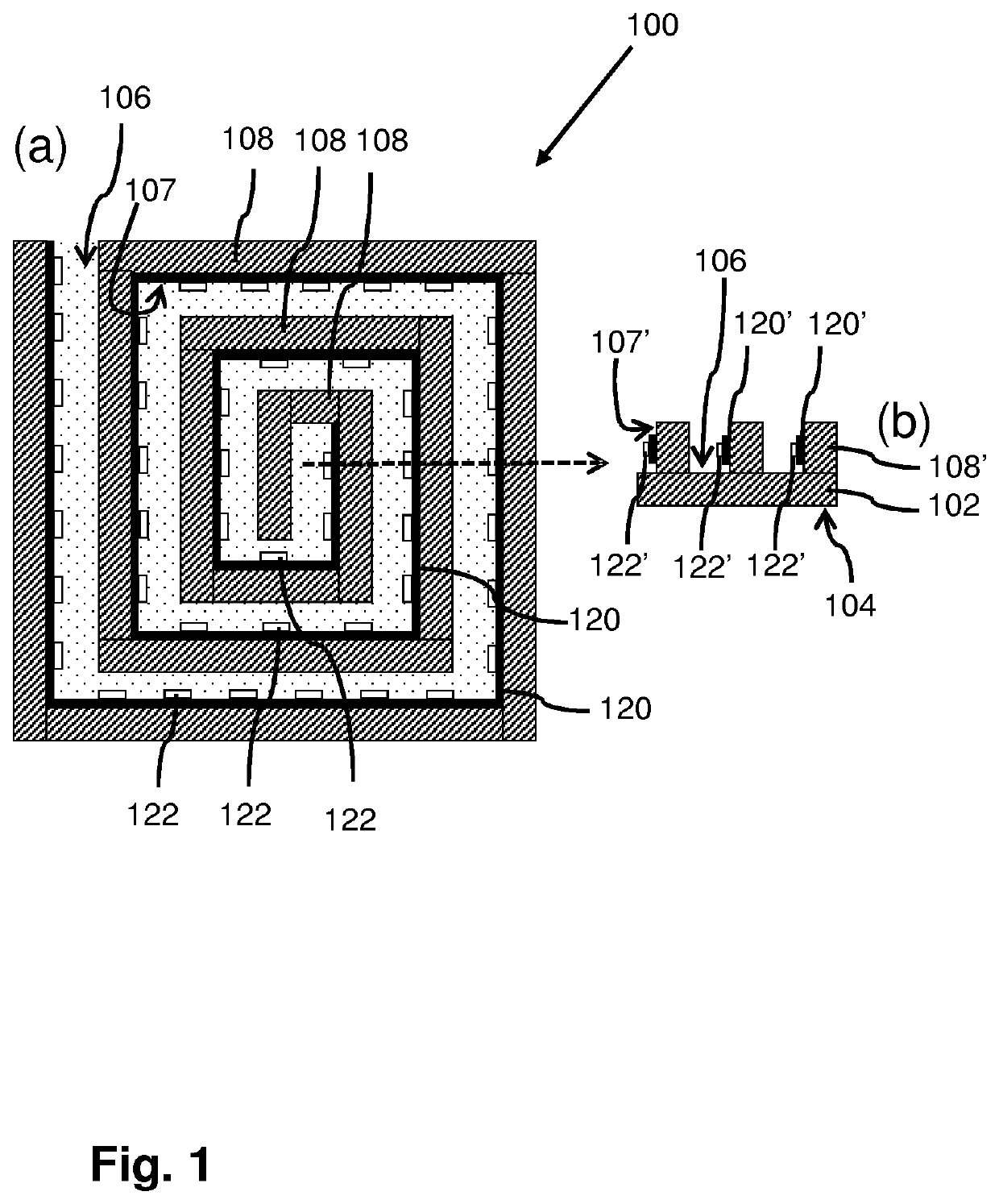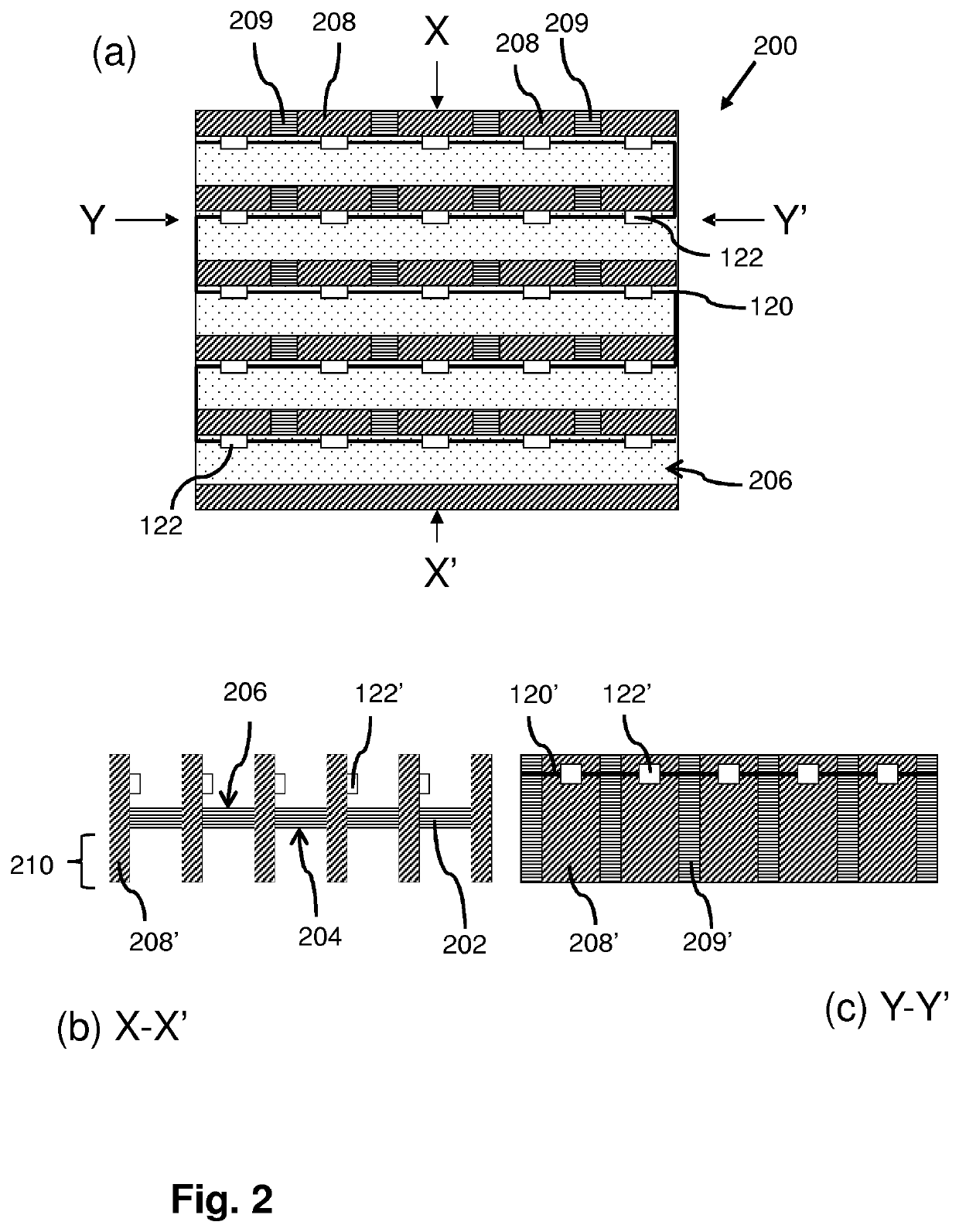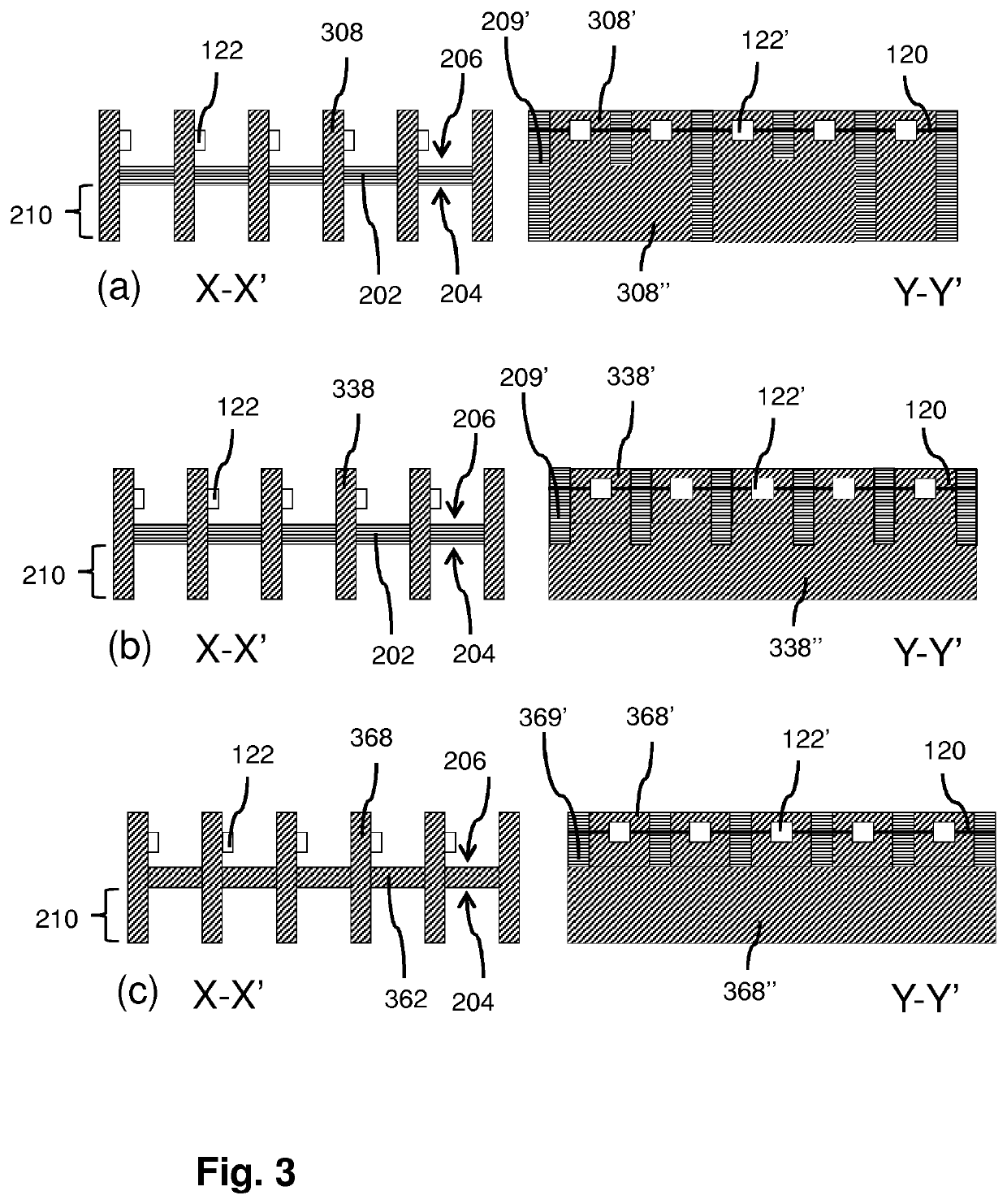Lighting assembly for emitting high intensity light, a light source, a lamp and a luminaire
a technology of light assembly and high intensity light, which is applied in the direction of lighting and heating apparatus, lighting device details, and light source extension, etc., can solve the problems of reducing efficiency, emitting diodes, and lack of light output, and achieves better thermal management.
- Summary
- Abstract
- Description
- Claims
- Application Information
AI Technical Summary
Benefits of technology
Problems solved by technology
Method used
Image
Examples
Embodiment Construction
[0028]FIG. 1 schematically shows an embodiment of a lighting assembly 100. The lighting assembly is for emitting high intensity light, for example, more than 500 lumen, or optionally more than 800 lumen, or optionally more than 1200 lumen.
[0029]At the left side of FIG. 1 a top view is presented of the lighting assembly 100. At the right side of FIG. 1 a cross-sectional view of a portion the lighting assembly 100 along a plane defined by the dashed arrow in the top view. The lighting assembly 100 comprises a heat transferring element 102 that comprises upstanding walls 108, 108′. The heat transferring element 102 has a first side 104 and a second side 106 opposite the first side 104. The first side 104 is, in the example of FIG. 1, a heat sink interface to which a heat sink can be thermally coupled. The upstanding walls 108, 108′ extend away from the second side 106 of the heat transferring element 102. The upstanding side walls have wall surfaces 107, 107′ that are adjacent to the s...
PUM
| Property | Measurement | Unit |
|---|---|---|
| angle | aaaaa | aaaaa |
| angle | aaaaa | aaaaa |
| angle | aaaaa | aaaaa |
Abstract
Description
Claims
Application Information
 Login to View More
Login to View More - R&D
- Intellectual Property
- Life Sciences
- Materials
- Tech Scout
- Unparalleled Data Quality
- Higher Quality Content
- 60% Fewer Hallucinations
Browse by: Latest US Patents, China's latest patents, Technical Efficacy Thesaurus, Application Domain, Technology Topic, Popular Technical Reports.
© 2025 PatSnap. All rights reserved.Legal|Privacy policy|Modern Slavery Act Transparency Statement|Sitemap|About US| Contact US: help@patsnap.com



